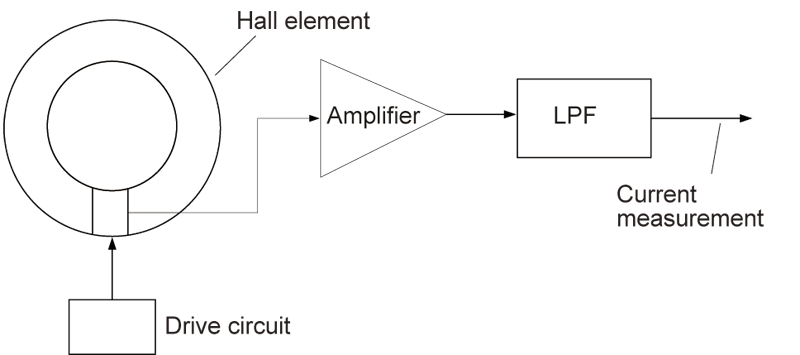Clamp meter measurement principles
Clamp meter measurement principles: CT method
Clamp meters measure current by using a sensor to detect the magnetic field produced by a flowing current and then converting the result to obtain the current. The measurement method and principle used by CT-type clamp meters are described below.
Design:
Coil wound around a magnetic core
Principle:
In this application of the principle of a transformer, the primary side consists of one winding (the wire around which the clamp has been applied), and the second side consists of N windings (the wire wound around the magnetic core). This arrangement is used to measure current. Due to the principle that is applied, caution is necessary if a current flows to the primary side while the secondary side is in the open state as a high voltage may occur at the open terminal due to the tendency of a current to develop on the secondary side of the device under such conditions.
Advantages:
Linearity and broad measurement range
Disadvantages:
Inability to detect DC currents
Clamp meter measurement principles: Hall element method
Clamp meters measure current by using a sensor to detect the magnetic field produced by a flowing current and then converting the result to obtain the current. The measurement principle used in the Hall element method is described below.
Design:
Hall element embedded in a magnetic core
Principle:
The magnetic field produced by the wire around which the clamp has been applied is converted to a voltage by the Hall element, and the voltage is converted to a current.
Advantages:
Ability to measure both DC currents and AC currents
Disadvantages:
Significant impact of sensor enclosure, magnetic circuit, and magnetic core design on instrument performance
Clamp meter measurement principles: Rogowski method
Clamp meters measure current by using a sensor to detect the magnetic field produced by a flowing current and then converting the result to obtain the current. The measurement principle used in Rogowski-type clamp meters is described below.
Design:
Rogowski coil wound around a coreless, nonmagnetic material
Principle:
Differentiated voltage waveforms are output at both ends of the coil depending on the current. The waveforms are integrated to calculate the current.
Advantages:
Flexibility due to the absence of a core, broad frequency band
Disadvantages:
Limited to measurement of AC currents



